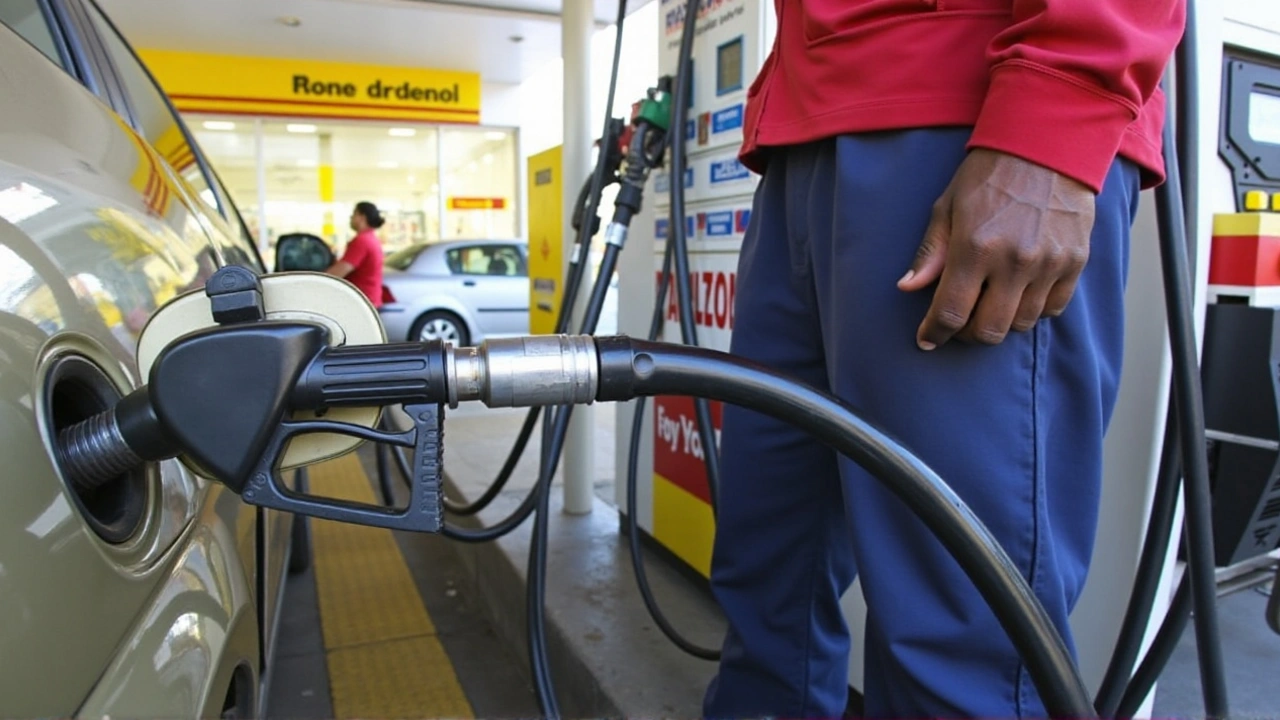South Africa's Official Petrol Prices for October 2024 Announced

Introduction to October 2024 Fuel Prices in South Africa
As the calendar flips over to October 2024, the Central Energy Fund has officially announced the updated petrol prices for South Africa, bringing new perspectives on the dynamic fuel market. The year has witnessed various fluctuations in fuel costs, driven by both domestic factors and international crude oil prices. The adjustments for October are now set, and motorists, businesses, and industries are all scrambling to adjust their budgets and forecasts accordingly. This new pricing model is set to impact everyday life, from the cost of commuting to the transportation of goods across the country.
Breakdown of Petrol Prices
95 Petrol Pricing
The 95 Petrol, a significant fuel variant used by the majority of the public, has been priced at R22.19 per litre inland. This includes cities and suburban areas that lie away from the coastal regions. For those residing or operating around coastal areas, the price is slightly lower at R21.05 per litre. These differences are largely attributed to transportation and distribution costs that vary based on geography. The Inland vs. Coastal pricing has been a consistent feature in South African fuel pricing, reflecting the logistical expenses that come with delivering fuel to different terrains and distances.
Diesel Pricing
The notable increases aren't confined to petrol alone. Diesel, which is critical for the functioning of heavy-duty vehicles and machinery, has seen its adjustments as well. For the 0.05% sulphur variant, the inland price stands at R19.59 per litre. Meanwhile, coastal regions enjoy a more affordable rate at R18.45 per litre. It’s worth noting that this sulphur percentage reflects South Africa’s ongoing efforts to enhance fuel quality and reduce sulfur emissions in line with global environmental standards.
Diesel 0.005% Variant
Interestingly, the price for Diesel 0.005% remains aligned with its 0.05% counterpart. Motorists can expect to pay R19.59 per litre inland for this more refined diesel option. However, the coastal price was not specified within the summary provided. This oversight necessitates that those in coastal regions refer to wholesale prices or consult additional sources for precise figures. It underscores the importance of understanding not just the posted prices but also the intricacies and specifics of fuel pricing for accurate budget planning and operations.
Implications of Fuel Price Adjustments
The impact of these new prices cannot be overstated. Fuel costs are directly tied to the economy's broader health, influencing everything from individual spending power to broader industry costs. Transportation, a critical sector for both goods and people, will see a clear impact. Public transportation fees might undergo revisions, and logistics companies will need to recalibrate their expense sheets. Additionally, retail prices for goods might see upward shifts as the cost of transporting these goods from warehouses to stores incorporates these new fuel expenses.
Households will also feel the pinch, especially those that rely heavily on personal vehicles for commuting. The slight relief for coastal residents in both petrol and diesel costs does offer some reprieve. However, for industries and large-scale operations, the inland prices will be an essential factor in cost assessments and potential price pass-throughs to consumers.
Global Oil Market Influence
These domestic adjustments are not isolated phenomena. They mirror movements in the global oil market. Crude oil prices have seen varying degrees of volatility over the past year, influenced by geopolitical events, production decisions by OPEC countries, and shifts in global demand patterns post-pandemic. South Africa, largely dependent on imported oil, often sees these international factors trickle down into local price adjustments, highlighting the interconnectedness of the global oil economy.
Government and Policy Considerations
The role of the government and energy regulatory bodies in setting these prices is critical. Policymakers must strike a delicate balance between ensuring fair prices for consumers and maintaining economic viability for fuel suppliers. Subsidies, taxes, and environmental levies all play a part in the final pricing structure. This October’s pricing reflects the complexities of these factors, taking into account both current economic conditions and future sustainability objectives.

The Road Ahead
As South Africans adjust to these new prices, the road ahead will involve careful planning and adaptation. Businesses will need to strategize to maintain profitability, while consumers might look for ways to reduce fuel consumption, such as carpooling or using public transportation more often. The ripple effect of fuel price adjustments will, as always, be substantial. Nonetheless, understanding the layers involved in reaching these prices can offer a clearer picture of what to expect in the coming months.
In conclusion, the official petrol prices for October 2024 bring to light important trends and considerations for the South African economy. With 95 Petrol priced at R22.19 per litre inland and R21.05 per litre at the coast, and Diesel 0.05% at R19.59 and R18.45 per litre respectively, these figures lay the groundwork for the financial decisions individuals and businesses will need to make. Staying informed and proactive will be key as the nation navigates these changes.
Write a comment